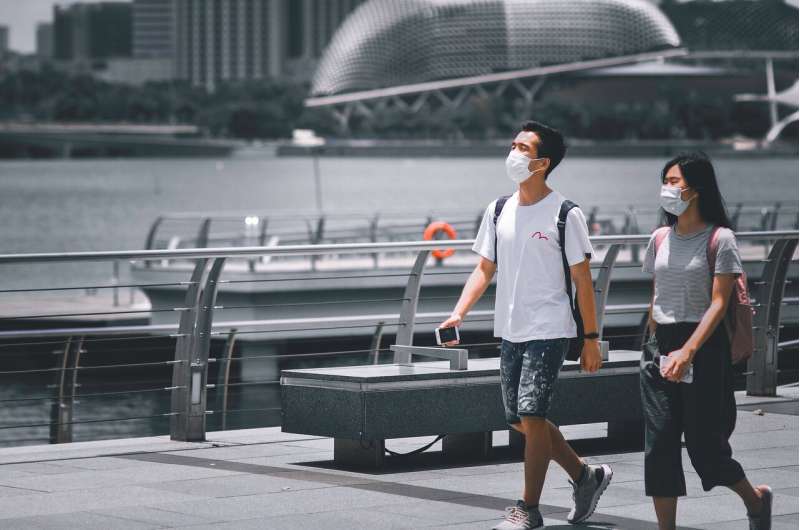
A study published today in JAMA Internal Medicine shows that wearing two face coverings can nearly double the effectiveness of filtering out SARS-CoV-2-sized particles, preventing them from reaching the wearer’s nose and mouth and causing COVID-19. The reason for the enhanced filtration isn’t so much adding layers of cloth, but eliminating any gaps or poor-fitting areas of a mask.
“The medical procedure masks are designed to have very good filtration potential based on their material, but the way they fit our faces isn’t perfect,” said Emily Sickbert-Bennett, Ph.D., associate professor of infectious diseases at the UNC School of Medicine and lead author of the study.
To test the fitted filtration efficiency (FFE) of a range of masks, UNC researchers worked with James Samet, Ph.D., and colleagues in the USEPA Human Studies Facility on the campus of UNC-Chapel Hill. There they filled a 10-foot by 10-foot stainless-steel exposure chamber with small salt particle aerosols, and had researchers don combinations of masks to test how effective they were at keeping particles out of their breathing space.
Each individual mask or layered mask combination was fitted with a metal sample port, which was attached to tubing in the exposure chamber that measured the concentration of particles entering the breathing space underneath the researcher’s mask. A second tube measured the ambient concentration of particles in the chamber. By measuring particle concentration in the breathing space underneath the mask compared to that in the chamber, researchers determined the FFE.
“We also had the researchers in the chamber undergo a series of range-of-motion activities to simulate the typical motions a person may do throughout their day—bending at the waist, talking, and looking left, right, up and down,” said Phillip Clapp, Ph.D., an inhalation toxicologist in the UNC School of Medicine who has been testing mask FFE with Sickbert-Bennett since the pandemic began.
According to their findings, the baseline fitted filtration efficiency (FFE) of a mask differs person to person, due to each person’s unique face and mask fit. But generally, a procedure mask without altering the fit, is about 40-60% effective at keeping COVID-19-sized particles out. A cloth mask is about 40% effective.
Their recent findings on doubling of face masks, shows that when a cloth mask is placed over a surgical mask, the FFE improved by about 20%, and improved even more with a snug-fitting, sleeve-type mask, such as a gaiter. When layered over procedure masks, cloth masks improve fit by eliminating gaps and holding the procedure mask closer to the face, consistently covering the nose and mouth. When a procedure mask is worn over a cloth mask, FFE improved by 16%.
Source: Read Full Article
